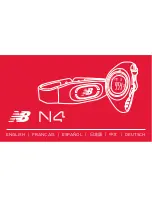
English
17
DE
EN
FR
ES
DK
NL
Cleaning
You will be able to extend the useful life of the TFT monitor by the following measures:
Important!
No
parts to be maintained
or cleaned are located within the monitor casing.
Always pull out the mains plug and all connecting cables before cleaning.
Do not use any solvents, corrosive or gaseous cleaning substances .
Clean the screen with a soft, fluff-free cloth.
Pay attention that
no drops of water
remain on the TFT monitor. Water can cause long-lasting
discolouring.
Do not subject the screen to either dazzling sunlight or to ultra-violet radiation.
Please keep the packaging material and use this exclusively to transport the TFT monitor.
Disposal
Packaging
Your device is in packaging for protection against transport damage. Packaging is made from
materials that can be disposed off in an environmentally friendly way and taken to correct recycling.
Device
Do not throw the device into the normal domestic refuse after the end of its useful life under any
circumstances. Obtain
information about the possibilities of environmentally friendly and correct disposal.
Pixel errors in the TFT monitor
A total of
approx. 3.1 m
control transistors are used in the case of Active Matrix TFTs with a resolution of
1366 x
768 pixels
,
each
composed
of three sub-pixels (red, green, blue). A failure or incorrect control of pixels or
individual sub-pixels can arise occasionally, because of this very high number of transistors and the extremely
complex manufacturing process associated with it.
There have been continuous approaches to define the number of permitted pixel errors in the past. However,
these attempts have for the most part been very complicated and completely different from manufacturer to
manufacturer. MEDION follows the strict and transparent requirement of the
ISO 9241-307, Class II
Norm, which
are summarised in brief in the following, in the handling of guarantees for all TFT display products for this reason.
Among other matters, the 9241-307 ISO Standard defines generally
applicable guidelines in relation to pixel errors. The pixel errors are
categorised into four error classes and three types of error. Each individual
pixel is composed in its turn of three sub-pixels each with a basic colour (red,
green, blue).
















































